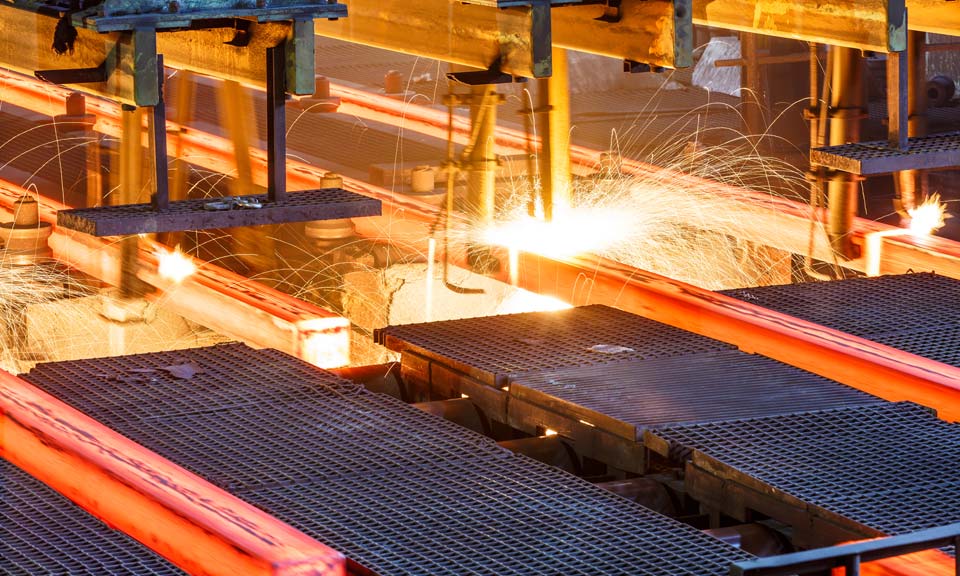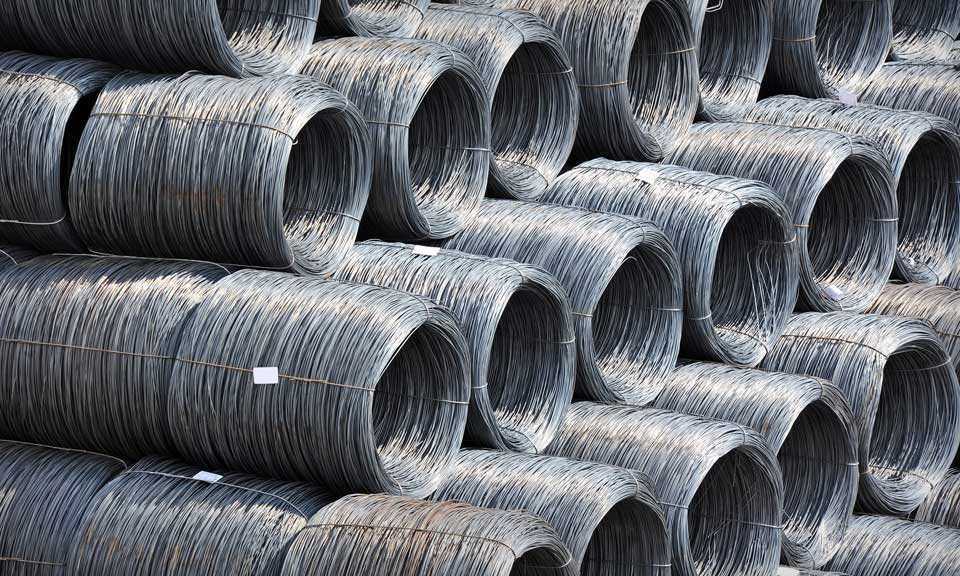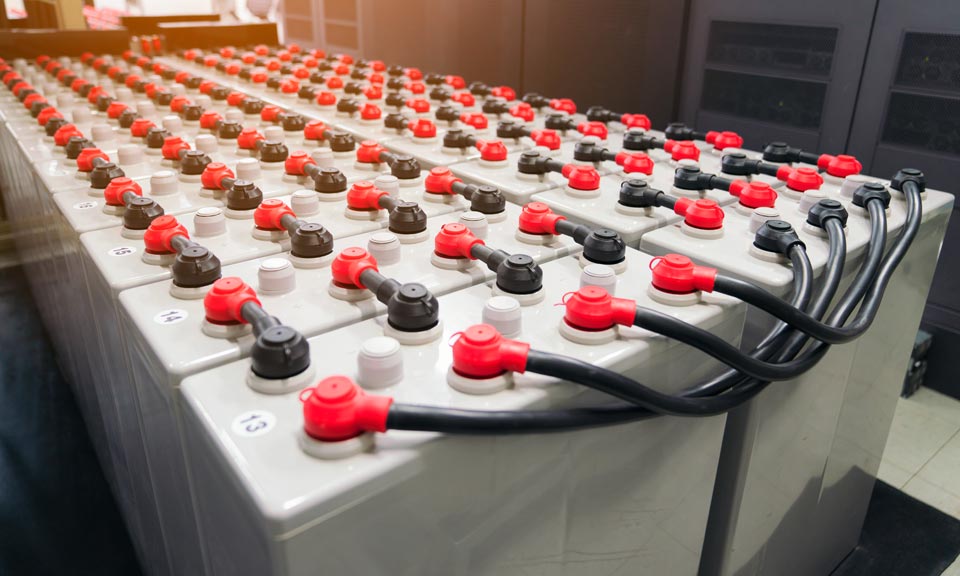6 key drivers shaping China’s steel market amid the latest COVID-19 surge

Markets have been highly anticipating steel demand recovery and more economic stimulus in the coming months, driving China's steel prices up since mid-March. However, the latest wave of COVID-19 infections in the country poses more challenges to domestic steel demand than steel production.
China's steel production is expected to rise in April, but supply chain disruptions and logistics hurdles across may parts of the country could continue to undermine end-user steel demand.
Here are six things to watch in China's steel sector at a time when the market remains over-optimistic about demand recovery.
The resurgence of COVID-19 infections in China that started around mid-March and spread across several provinces has not weighed on the country's steel production prospects in April.
China Iron & Steel Association estimated China's daily crude steel output in March 21-31 to have increased by 4.9% from mid-March to 2.788 million mt/day. Daily crude steel output in March increased to 2.709 million mt, up 1.2% from the average level in January-February despite Tangshan's city-wide lockdown since March 19.
Market sources said the uptrend in China's steel production will continue in April, especially as Tangshan, China's steelmaking hub, gradually eased city-wide lockdown since March 28. Tangshan fully lifted social restrictions on April 11, and its steel production is now expected to resume an upward trend, adding extra momentum to China's steel output growth.
"If it were not for the COVID outbreaks, China's crude steel output in early April should have already reached the level [3.26 million mt/day] of a year ago," one source said, adding the uptrend in China's steel output could accelerate in the coming months.
Over January-March, China commissioned eight new blast furnaces with a combined 16.64 million mt/year pig iron making capacity, through capacity swaps.
But as some replaced blast furnaces have been closed years ago, the commissioning of these new facilities has still led to a net capacity growth of around 6 million mt/year.
Due to strong export order bookings received in March amid the Russia-Ukraine conflict, China's finished and semi-finished steel export volume were expected to rise in March from February's 3.91 million mt, market participants said. In April, those export volumes are expected to see a much sharper growth, jumping to around 7 million-8 million mt.
But even with the improvement in overseas demand, overall steel exports in April would be just around the level seen a year ago, providing limited upward momentum to the domestic market. In April 2021, China's overall steel exports were at 7.97 million mt.
Moreover, export orders for June shipments have dwindled, as rising Chinese prices have become less attractive and European buyers have now purchased sufficient inventories.
The latest lockdowns in the COVID-19-affected cities and regions have compounded China's supply chain and logistical challenges: transportation has been disrupted, workers remain in isolation, and construction activities have been either halted or reduced. This situation is likely to continue as China is adhering to a zero-Covid policy.
In northern China's Beijing and southern China's Guangdong province, some local sources said transactions of construction steel in early April were just about 80%-90% of the levels of a year ago.
With the ongoing city-wide lockdown in Shanghai, the year-on-year decline in steel transactions in eastern China could only be greater than that in Beijing and Guangdong.
Market chatter indicated China might cut reserve requirement ratio or even interest rate in April, but as the zero-Covid policy continues, restrictions on mobility and transportation could reduce the effect of new stimulus.
This was clearly reflected in March when the manufacturing activity contracted for the first time in four months due to the pandemic.
Even without the COVID-19 outbreaks, the slowdown in China's property sector was already pinching the country's overall steel demand and it was expected to weigh throughout 2022.
More than 60 cities have largely eased restrictions on home buying in early April, but some sources believe property sales were unlikely to bottom out at least until after the first half of this year, and new home starts in 2022 could drop by as much as 20%-30% on the year.
Some of the sources also said due to lack of traditional infrastructure projects and high local government debt, the growth rate of China's infrastructure investment in 2022 was likely to be just at low single digit, far from enough to offset the slowdown in property steel demand.
China's excavator sales in the domestic market, an indicator of construction activity for upcoming months, dropped 63.6% on the year in March, deteriorating from a 30.5% year-on-year drop in February, data from China Construction Machinery Association showed April 8.
Despite more favorable polices expected to aid steel demand, factors such as rising steel production in hubs like Tangshan, uncertainty around pandemic-related restrictions and a lackluster improvement in the property sector will remain key indicators of what could be in the store for steel markets in the upcoming months.

News
China's property sector has been in shambles over the past few years and remains the biggest drag on domestic steel demand. The property market has trended downwards in the first quarter of 2024. With no major recovery signs in new home sales, China’s new home construction starts are likely to remain on the downwards trajectory in the foreseeable future. The slowing property sector has triggered debt risks locally, leading Beijing to order local governments to downsize infrastructure projects, which has also undermined the growth momentum in infrastructure steel needs, adding to the demand slump. Click here to see full-size image

News
Plant will have an output of 80,000 mt/year Syrah delivered 10,000 mt of graphite fines to PT Indonesia BTR Chinese graphite exports "extremely limited" over Jan-Feb Chinese anode material producer BTR New Material Group is expected to start up an 80,000-mt/year active anode materials plant at Indonesia's Morowali Industrial Park, Central Sulawesi province, by the end of 2024, Australia-listed graphite producer Syrah Resources said April 8. The $478 million AAM plant will process synthetic graphite, supplied by Syrah and other suppliers, into anode materials. At the same time, Australia's Evolution Energy Minerals, in which BTR owns a 9.9% stake, is expected to supply 100% of the fine flake graphite produced from its Chilalo project in Tanzania to BTR for three years. Syrah said on the same date that it delivered a 10,000-mt break bulk shipment of natural graphite fines from its Balama graphite operation in Mozambique to PT Indonesia BTR New Energy Materials in Indonesia. The future of Syrah's Balama operation, which has a production capacity of about 350,000 mt/year, will be determined by the impact of China's export controls on the global market. China implemented export controls on natural graphite and its products, effective Dec. 1, 2023 . Citing January-February data from China's General Administration of Customs, "natural graphite fines and coarse flake exports were extremely limited," Syrah said. "Purified spherical graphite exports were 25%-40% of the 2023 monthly average and limited to South Korea." The 10,000-mt cargo to BTR is Syrah's "first large volume natural graphite sale to a battery supply chain participant destination outside China," Syrah said, following a trial shipment made in the first quarter of 2024. The delivery of the graphite cargo to Indonesia comes after Syrah signed a six-year deal to supply natural graphite fines to South Korea's Posco Future M in March . Data from S&P Global Commodity Insights showed that Platts assessed spot prices of natural flake graphite at $465/mt CIF Northeast Asia on April 5, flat from the session before, and spherical graphite at $2,060/mt CIF Northeast Asia, also unchanged from the previous session. Platts Connect: News & Insights (spglobal.com)

News
More processing of CAM, battery precursors for qualification with OEMs Center to focus on reducing CAPEX, OPEX; improving metal recovery rates Company to implement processes at commercial scale at planned Teesside recycling hub UK-based clean technology company Altilium has completed the expansion of its cathode active materials and EV battery recycling innovation center in Plymouth, it said April 5. The site has been expanded from 10,000 sq ft to 18,000 sq ft with the staff headcount increased to 70, it said in a statement. Without disclosing specific volumes, the company said the expansion would allow it to process larger volumes of CAM and battery precursors for qualification with OEM’s and battery cell manufacturers. Work completed on the facility includes a major electrical upgrade required to power the recycling facility, start-up EV battery recycling test bed and equipment procurement. Altilium said the innovation center, known as Act 2, would focus on reducing CAPEX and OPEX of future plants and improving the rates of metal recovery, particularly for lithium. The company plans to implement these processes at its planned Teesside recycling hub (Act 4). Announced in November, the Teesside facility, designed by engineering consultancy Hatch, will have the capacity to process approximately 50,000 mt/year of black mass. When batteries are manufactured or reach their end of life, production offcuts or used batteries can be collected, dismantled and shredded to produce black mass, from which critical metals including lithium, nickel, cobalt and manganese can be extracted. The plant will comprise two processing facilities: a chemical plant producing 95,000 mt/year of battery precursors including lithium carbonate and nickel sulfate, and a cathode active material plant producing 30,000 mt/year of CAM. The company said the facility, once fully operational, will meet around 20% of the UK’s CAM requirements. The recycling of black mass has become increasingly important as a supplement to virgin material supply, as well as to reduce the carbon footprint in the battery supply chain. In addition to its Teesside battery recycling plant, Altilium is also retrofitting its existing SX-EW hydrometallurgy plant in Bulgaria to produce battery intermediates MHP and lithium sulfate. The plant is being upgraded to process up to 8,000 mt/year of black mass, with commercial operations expected to start this year. On Feb. 22, SQM Lithium Ventures said is had increased its investment in Altilium by $9.43 million, bringing its total contribution to $12 million. The funding, done through SQM's investment arm SQM Capital Ventures, was part of the Series A financing round. Altilium’s Series B financing, which will focus exclusively on the Teesside project, is expected to launch during 2024, with the plant itself expected to take around 36 months to construct. Platts, part of S&P Global Commodity Insights, assessed cobalt payables for Ni-Co black mass ex-works Europe at 52% basis European cobalt metal 99.8% April 2, down 3 percentage points on the day and on the week. Platts assessed nickel payables at 52% basis LME nickel April 2, also down 3 percentage points on the day and on the week. Platts Connect: News & Insights (spglobal.com)

News
To build on EU's Critical Raw Materials Package Support, accelerate implementation of sustainable critical minerals projects The EU, US and other countries in the Minerals Security Partnership (MSP) have launched the MSP Forum to expand cooperation on critical raw materials required for the global green and digital transitions, the European Commission said in an April 5 statement. The MSP partners were joined by Kazakhstan, Namibia, Ukraine and Uzbekistan to launch the platform, it said, which will be co-led by the US and the EU. The EC added that the recently announced Critical Raw Materials Club would become a full part of the MSP Forum, bringing together resource-rich countries and countries with high demand for the resources. “This will create a greater, more ambitious joint initiative linked to the Minerals Security Partnership, where the European Commission represents the EU,” it said. The MSP Forum aims to build on the EU's Critical Raw Materials Package adopted in March 2023 and will form a project group to support and accelerate the implementation of sustainable critical minerals projects, the EC said. The forum will also create a policy dialogue to identify policies for boosting sustainable production and local capacities, facilitate regulatory cooperation to foster fair competition, transparency and predictability and promote high environmental, social and governance standards in critical raw material supply chains, the EC said. “The MSP Forum is a cornerstone of the EU’s strategy to secure a more sustainable supply of critical raw materials,” EC Executive Vice-President and Commissioner for Trade Valdis Dombrovskis said, adding that it would be key to reducing vulnerabilities and achieving the green and digital transition in Europe and globally. “With this global initiative, we want to make sure that international cooperation is up to the task of increasing investment, diversifying supply chains and bringing sustainable benefits to all parties,” he said. Critical raw materials are needed for numerous technologies in the energy transition, resulting in high demand, although supply is hindered by geopolitical, environmental and social risks and challenges. The EC estimates that EU demand for lithium used in electric vehicle batteries and energy storage will increase twelve-fold by 2030. Platts, part of S&P Global Commodity Insights, put both battery grade lithium carbonate and hydroxide assessments at $14,500/mt CIF Europe on April 4, both stable on the day and on the week, and down from $15,800/mt on Jan. 2. The EC said any partners that were ready to commit to the key MSP principles would be allowed to join the MSP Forum, noting that these principles included diversification of global supply chains and high environmental standards, good governance and fair working conditions. The co-leaders and current MSP partners plan to reach out to prospective members in North and South America, Africa, Asia and Europe to expand the Forum’s participation and start working within the project and policy dialogue groups. Besides the EU and US, the current MSP partners are Australia, Canada, Estonia, Finland, France, Germany, India, Italy, Japan, Norway, South Korea, Sweden and the UK. EU, Uzbekistan sign MOU In a separate statement, the EC announced that the EU and Uzbekistan had signed a memorandum of understanding to launch a strategic partnership on critical raw materials, which it said “underscored the partners' shared commitment to enhance cooperation in the field of critical raw material.” Under the partnership, the EU and Uzbekistan will work on establishing an operational roadmap with concrete implementation actions, the EC said. The partnership will focus on cooperating on the integration of sustainable value chains, increasing the resilience of supply chains and enhancing the transparency of measures related to investments, operations and exports. It will also focus on the mobilization of funding for projects resulting from the partnership and the development of infrastructure required for the development of value chains, as well as on cooperation to achieve sustainable and responsible production and sourcing of critical raw material, on research and innovation, and on building capacity to enforce relevant rules and on developing training and skills. Platts Connect: News & Insights (spglobal.com)